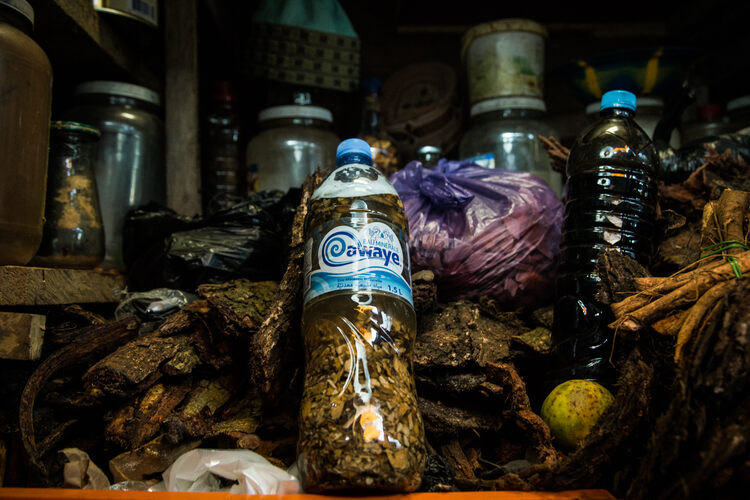
A new study reveals that when chimpanzee’s are sick or injured they will actively seek out natural medicine from their forest homes
By
Eight years ago, I was in the West African nation of Guinea researching a story for Geographical magazine on the impact of Ebola on chimpanzees and other great apes. In the course of this research, I was introduced to the country’s first primatologist. Sitting in his cool and dark home we discussed everything chimpanzee. But, of all the things we spoke about there was one part of that conversation that remains burnt into my memory. He told me that over the years that he’d spent watching the chimpanzee’s he’d noticed that when one of them was sick it would go off to look for specific forest plants with which to treat itself. Intrigued, the primatologist gathered up the leaves, fruit and bark that the sick chimpanzees prescribed themselves and created his own medication that he claimed could ‘cure almost anything’. When he eventually retired from the world of field biology he became a guérisseur (traditional healer) and used his secret chimpanzee medication to cure his patients.

It is of course no secret that tropical forests contain many plants whose healing properties we are only just beginning to understand. But, I have to admit that I felt a certain sense of scepticism about the guérisseur’s medication. But now, a new study has shown that I might have misjudged the medical expertise of the guérisseur – and the chimpanzee’s.
The team, led by Dr Elodie Freymann, from the University of Oxford, spent four years studying two communities of chimpanzees in the Budongo Central Forest Reserve in Uganda. By paying particular attention to the actions and movements of sick or injured chimpanzees, they noticed, just as my guerriseur friend had, that these chimps appeared to search for very specific plants, fruits or tree bark from the forest, including ones that they didn’t normally eat. By testing samples of these plants, the team discovered that 88 per cent of the items contained extracts that inhibited bacterial growth, including bacteria such as E. coli. And, that around a third contained natural anti-inflammatory properties that could reduce pain and speed healing.
One particularly striking example of self-medication that the study highlights is the case of a male chimpanzee with an injured hand. Leaving the rest of the group behind he went off in search of a specific type of fern to eat. A few days later he had recovered and was back to using his injured hand normally again. When the team analysed the properties of the fern, they discovered that it contained anti-inflammatory properties.
Commenting on the findings, Dr Freymann said that studying the behaviour of chimpanzees and how they appear to self-medicate could potentially lead ‘To the discovery of novel human medicines to combat the looming problem of growing drug resistance. For this to happen, however, it is imperative that we urgently prioritise the preservation of our wild forest pharmacies as well as our primate cousins who inhabit them’.

Not being one to turn down a magic ‘cure all’ I had bought a bottle from the guérisseur. I still have it today. Its concoction of leaves, bark and various utterly unidentifiable objects swish around in a soupy brown liquid in an old plastic bottle. But, you’re probably wondering, does the chimpanzee medication really work? Well, once or twice, when the children suddenly develop a mystery sickness that means that they cannot possibly go to school that day, I’ve opened up the bottle, let the potent odour fill the room, and then watched bemused as a miraculous recovery occurs in my children and they rush off to school muttering something about suddenly feeling as right as rain….
Related articles:




